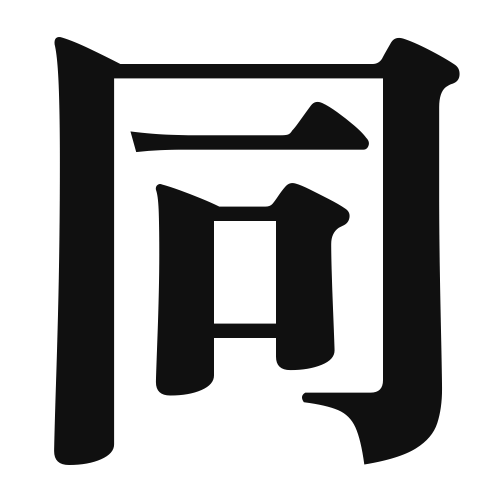1. Overview of Meaning
The kanji “同” (pronounced “dou” or “on”) means “same” or “together.” It is used to express similarity or agreement between things or people.
2. Formation and Radical
Formation of the Kanji: The kanji “同” is a compound character, which means it is formed by combining different elements. It consists of the radical “口” (kuchi), which means “mouth,” and the character “同” itself, which conveys the idea of sameness or togetherness.
Radical: The radical of “同” is “口” (kuchi), indicating its connection to speech or communication, which aligns with the concept of agreement or similarity.
3. Examples of Usage
Common Words and Phrases: Some frequently used words that include “同” are:
- 同じ (onaji) – same
- 同意 (doui) – agreement
- 同時 (douji) – simultaneous
Example Sentences in Daily Conversation:
- 私たちは同じ意見です。 (Watashitachi wa onaji iken desu.) – We have the same opinion.
- 彼と私は同じ学校に通っています。 (Kare to watashi wa onaji gakkou ni kayotteimasu.) – He and I go to the same school.
4. Synonyms and Antonyms
Similar Kanji: A similar kanji is “似” (ni), which means “similar” but emphasizes likeness rather than exact sameness.
Antonyms: An antonym of “同” is “異” (i), which means “different” or “other,” highlighting a contrast in similarity.
5. Cultural and Historical Background
Connection to Japanese Culture: The concept of “同” is significant in Japanese culture, where harmony and agreement are highly valued in social interactions.
Proverbs and Idioms: An example of a proverb that includes “同” is “同じ釜の飯を食う” (onaji kama no meshi o kuu), which means “to eat from the same pot,” symbolizing a close relationship or camaraderie.
